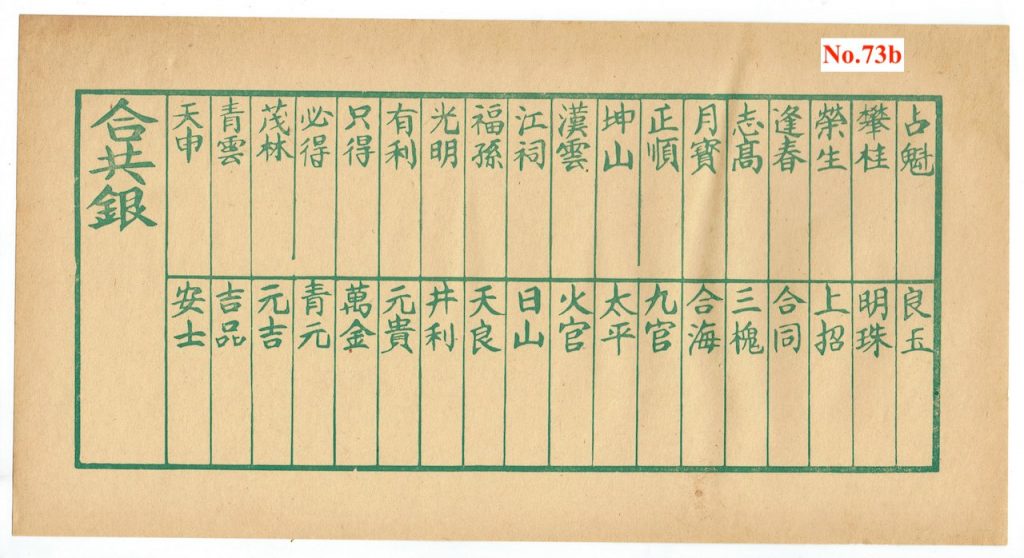
“Like a Pak-a-pu ticket” was a phrase once common in Australian English and implied that something was extremely messy or confused.[1] In other words, pretty much like the Chinese characters on a pakapu/pakapoo ticket (白鴿票) would have looked to most non-Chinese readers. Not that inability to read the characters was any bar to playing and certainly playing this form of lottery (which many say was the origin of Keno) was popular with Chinese and non-Chinese Australian’s alike in the 19th and early 20th century. On “any Saturday evening” in Melbourne in 1876 for example it was estimated that some 300 citizens were engaged in trying their luck at shops referred to as “Baby’s”, “The Doctor’s” and “Fong Fat’s”.[2] [For the rules of a lottery shop.]

The pakapu tickets were sold in the streets on a commission basis and the winning combination drawn regularly and paid out on the basis of the number of characters marked off that matched those drawn. Ten was the number to be marked out of a possible 80 and winnings were paid on 5 correct and more. The potential prize could be substantial for a 6d. ticket:
If the ticket-holder has not five winning marks out of his ten be wins nothing but if he has five he wins 1s, 2d. ; if six, 9s. ; if seven, £3 15s, ; if eight, £21 ; if nine, £45 ; if the whole ten of his marks correspond with the prize marks he receives £81.[3]
The popularity of pakapoo declined along with the size of the Chinese community in Australia as the White Australia policy and its Dictation Test began to bite. (See No. 1 & No. 40) However one of the loopholes in the White Australia policy involved the pearl shell industry and it would seem that it was through this interaction that another gambling game entered Australia.

While the characters of pakapoo were based on well-known texts it was not necessary to know how to read them. However, this was not the case with Chiffa or Cheefah (字花). While also Chinese in origin and certainly using Chinese characters, this game was perhaps introduced via the pearl divers that came to Broome where it was played well into the second half of the 20th century, as well as earlier that century in Perth.[4] With Cheefah the winning combination is drawn before the tickets are sold and are accompanied with a clue that supposedly hints at the winning number. Thus, the two characters in each of the 36 boxes are actually a name of an historical or mythological person associated with a number of themes, animals, etc. Knowledge of these supposedly allows the clue or riddle given by the promotor to be helpful in guessing the best combination for a win.
While Cheefah does not seem to have been well-known outside of the Chinese community – except perhaps in Broome – Pakapoo certainly achieved a reasonable level of notoriety if not popularity. Pakapoo added, albeit temporarily, to the Australian vocabulary, as it no doubt also did (temporarily) to the fortunes of some.
[1] See, The Sun, 7 October 1931, p.17 & Smith’s Weekly, 12 Mar 1938, p.2.
[2] Australasian Sketcher, 15 April 1876, p.7.
[3] Weekly Times, Saturday 11 March 1871, p.10.
[4] The story of the Chinese in Broome by Sarah Yu and Carol Tang Wei, Broome, 1999 & The Register, Saturday 30 June 1906, p.8.

